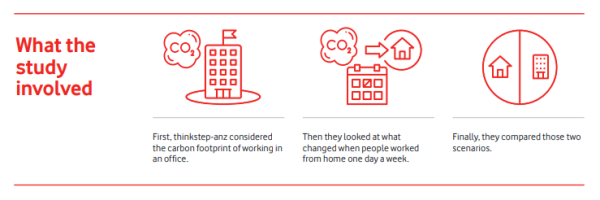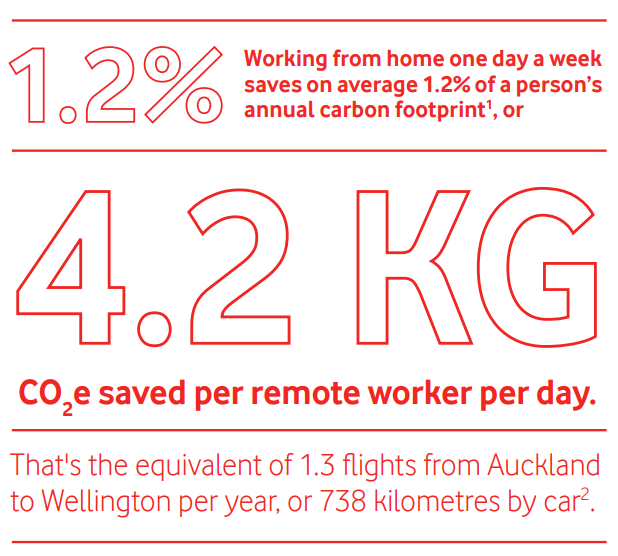Businesses have embraced digital technology like never before. With the right digital, security and collaboration tools employees can work from pretty much anywhere. But what impact does this new flexibility have on our carbon footprints?
Vodafone New Zealand (now known as One New Zealand) asked us to measure how working from home one day a week affects the size of an employee’s carbon footprint.
‘When we looked at remote working, we wondered what other benefits there might be,’ says Vodafone Chief Transformation Officer Juliet Jones. ’That's where the genesis of the research started. This is another data point businesses can take into consideration.’
’The study we did for Vodafone shows that supporting staff to work more flexibly is another tool New Zealand businesses can use to cut down on carbon,’ thinkstep-anz Senior Sustainability Expert Noa Meron says. ’The savings can be even higher if we use small rooms – if possible – when working from home so we need less energy for heating and cooling.’
Comparing the impact: working from home versus working in the office
The study took working at the office as the baseline and compared it with the impact of all the activities that become necessary when some employees work from home once a week.

The result: flexible working can have a smaller carbon footprint
The study found that the average New Zealand office worker who works one day a week from home will save 4.2 kg in carbon emissions per day, compared to commuting into the office every day. Over a year that adds up to the equivalent of 1.3 flights from Auckland to Wellington.

Where do the benefits come from?
The biggest difference comes from the avoided commute, and the further you drive, the bigger the saving. For example, workers who would otherwise use a car to drive five kilometres each way are very likely to reduce their carbon footprint by working from home.

Reduce your impact
Transport is one of our largest sources of greenhouse gas emissions and is responsible for 17 per cent of Aotearoa New Zealand’s gross emissions. Over time, consumers and the transport industry are expected to switch to cars, buses and trucks powered by electricity, biofuels and/or hydrogen fuel cells but here is how businesses and your team can make a difference right now.
Encourage your staff to:
- Work from home: Equip your staff with what they need to work remotely. Heating a home office has the biggest impact, so encourage staff to use small office spaces and efficient low-carbon heaters.
If they travel to the office encourage them to:
- Bike, walk or scooter: Make space available to park bikes securely. Offer charge spots for e-bikes. Provide showers. The better the infrastructure, the more cyclists will use it. Offer bike safety lessons. Negotiate a staff deal for e-bikes.
- Carpool: Set up internal noticeboards or investigate apps like Waze, Thumbs Up or Hitch to connect people.
- Use public transport: Subsidised bus tickets anyone?
5 December 2022